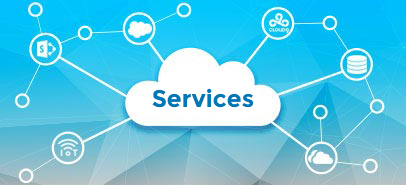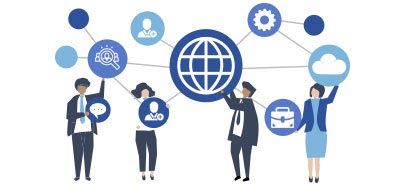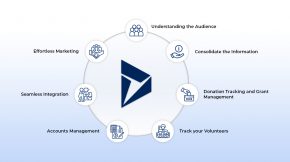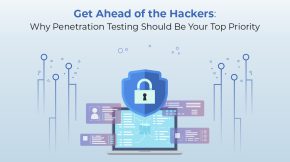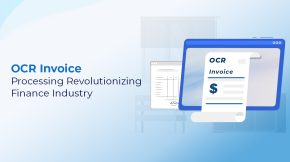Why Transitioning from Dynamics NAV to Business Central Is Your Last Upgrade
Let’s be real. If you’re using Microsoft Dynamics NAV 365, you’ve probably had this thought: “Our system works… but is it working for us?” You built your business on NAV’s reliability, but now there’s talk about Cloud, Remote work, and AI. It can feel like your trusted ERP is showing its age.
You’re not just considering another update; you’re planning a journey. And for anyone considering Dynamics NAV to Business Central Upgrade, it’s normal to have questions. We’re here to walk you through it, not with confusing jargon, but with straight talk to help you and your team make the leap with confidence.
Think of this less as a mandatory upgrade and more as finally trading in that reliable but aging sedan for a fully loaded, self-driving SUV. It’s familiar enough to drive, but oh, what a difference it makes.
So, When Should You Actually Make the Move? Let’s Talk Timing
The “Our Business Has Changed” Reality: The company you ran when you implemented Microsoft Dynamics NAV 365 is probably different today. Maybe you have new sales channels, complex inventory needs, or a remote team. If you’re constantly working around your software instead of with it, that’s your sign.
You don’t need to panic, but you might need a plan. Here’s how to know when the time is right to upgrade Dynamics NAV to Business Central upgrade:
- The “Running Out of Support” Nudge: Remember NAV 2013? It’s now officially retired, meaning no more security patches or help from Microsoft. If your version is getting long in the tooth, staying put is a growing risk. It’s like ignoring a “Check Engine” light. Here’s the official timeline to see where your version stands.
- The “We Need to Work Smarter” Desire: Business Central is built for how we work now. Click into Power BI for instant reports, automate approvals without paper, and log in from your laptop at home or your tablet on the road. If that sounds better than your current reality, it is.
- The “Please, Just Keep Us Secure” Need: Let’s face it, managing security patches is a headache. Business Central handles that automatically. Microsoft’s world-class security protects your data in their data centers, so you can sleep easier.
More Than Just New Software: The Real Benefits You’ll Feel
The decision to upgrade Dynamics NAV to Business Central isn’t about IT; it’s about empowering your people.
- Truly Work From Anywhere: Forget the VPN. Your team can securely access everything they need from a web browser anywhere, on any device.
- Security You Can Set and Forget: Your data is automatically protected and backed up in Microsoft’s ultra-secure data centers. Disaster recovery is included, not an extra cost.
- Never Do a Big Upgrade Again: Seriously. This is the last major project of its kind. Business Central updates itself continuously with small, seamless updates that give you new features without the big, disruptive projects.
- Slash Your IT overhead: No more servers to buy, maintain, or cool. Your IT folks can finally focus on strategic projects instead of just keeping the lights on.
- Make Your Microsoft Subscription Worth It: Your ERP now chats natively with Teams, Outlook, and Excel. It’s all connected, saving everyone time and frustration.
Your Two Paths: A Direct Move or a Fresh Start
When you decide to move, you have two main choices for your Dynamics NAV to Dynamics 365 Business Central Upgrade:
- The Upgrade Path: Think of this as a direct transplant. We carefully move your existing data and processes over. It’s a good option if your processes are already lean and mean.
- The Clean Start Path: With a Clean Start, you transfer only essential data. This lets you redesign your processes to be more efficient from day one. This is an opportunity to leave behind old, inefficient processes and start fresh. Your historical data isn’t gone—it’s just stored smartly in a platform like Azure Data Lake for reporting.
Which path is for you? If you feel like your current processes are holding you back, the Clean Start is often a game-changer.
What Does This Journey Actually Look Like?
A typical project for Dynamics NAV to Dynamics 365 Business Central Upgrade takes a few months—think of it like a well-organized office renovation. It’s a short-term investment for a long-term gain. A study by Forrester found that companies that made the move saw stunning results:
- 87% got a better grip on their cash flow.
- 86% saw their IT support costs go down.
- 65% closed their books faster every month.
But What About My Data? And My Customizations? Let’s Talk specifics.
This is often the biggest worry we hear: “We’ve spent years perfecting our NAV system. What happens to all that?”
It’s a totally valid concern. Think of your data and customizations like the contents of your house before moving. You don’t just throw everything in boxes haphazardly; you take inventory, decide what to keep, what to donate, and what to leave behind because you’re upgrading to something better.
Your Data is Safe: Whether you choose the Upgrade or Clean Start path, your critical business data—customer lists, vendor info, open orders, general ledger history—makes the journey with you. In a Clean Start, older, historical transactional data is moved to a secure, accessible archive like Azure Data Lake. It’s not in your daily workspace, but it’s there if you need it for reporting or compliance. This declutters your new system, making it run faster and feel cleaner for your team.
Your Customizations Get a Modern Makeover: Many of the custom code pieces (modifications) built into your old NAV system were created to fill a functionality gap. The beautiful thing about Business Central is that many of those gaps no longer exist! A huge part of our process is sitting down with you to ask: “Do we still need this customization, or does Business Central already do this out of the box?”
For the customizations you truly need, we rebuild them as modern “extensions.” This is a better, cleaner way that makes applying those future automatic updates from Microsoft smooth and painless. No more merged nightmares!
“Okay, But What Will My Team Think?” Managing the Human Side of Change
Let’s be honest, people are creatures of habit. The thought of learning a new system can be daunting for your finance team, your warehouse managers, your salespeople—everyone.
We don’t just throw a manual at them and wish them luck. Here’s how we make it easier:
- It Feels Familiar: The interface of Business Central is different, but it’s built on a foundation your NAV users will recognize. The core concepts are the same. It’s like moving from an older iPhone to a new one; the layout is fresher and there are new features, but you still know how to make a call.
- We Focus on Training, Not Just Telling: We work with you to create role-based training. Your sales order entry folks get training focused on their screens and tasks. Your CFO gets a deep dive into reporting and financial forecasting. This makes learning relevant and much less overwhelming.
- You Have a Guide, Not Just a technician: Your Beyond Key consultant is there to answer questions, provide quick-reference guides, and offer support long after “Go-Live.” We’re in your corner to ensure user adoption is high because that’s where the real return on investment comes from.
The Elephant in the Room: Let’s Talk About Cost (The Real Cost)
It’s true, moving to a cloud-based subscription model (OpEx) is different than the big upfront capital expense (CapEx) of an on-premise server and perpetual license.
But let’s talk about the total cost for your Dynamics NAV to Dynamics 365 Business Central Upgrade, not just the invoice.
With your old Dynamics NAV system, what were the hidden costs?
- The server that needs replacing every 5 years.
- The IT consultant on retainer to apply patches and fix issues.
- The massive, disruptive cost (and panic!) of a full version upgrade every few years.
- The lost productivity from employees who can’t access the system remotely or are stuck with manual workarounds.
With Business Central, you trade those unpredictable, large costs for a predictable, monthly per-user fee. That fee includes everything: the software, the hosting, the automatic updates, and the security. It’s peace of mind. It turns IT from a cost center into a strategic partner.
The Bottom Line Isn’t on a Spreadsheet
Ultimately, the move from Dynamics NAV to Dynamics 365 Business Central isn’t just about technology. It’s about capability.
- It’s about your sales manager pulling a real-time sales report on her phone minutes before a meeting.
- It’s about your accountant automating month-end reconciliations and getting hours of their life back.
- It’s about you, the business leader, having a clear, dashboard view of your entire operation from anywhere in the world.
That’s the real future-proofing. It’s not just maintaining; it’s accelerating.
You Don’t Have to Figure This Out Alone
At Beyond Key, we get it. We’ve helped countless businesses like yours cross this bridge. We speak both languages—”classic NAV” and “modern Business Central.” Our job isn’t just to install software; it’s to be your guide, ensuring your team feels supported and trained every step of the way.
We’ll help you build a technology roadmap that doesn’t just solve today’s problems, but prepares you for tomorrow’s opportunities.
Ready to Leave the Upgrade Cycle Behind?
The Dynamics NAV to Dynamics 365 Business Central Upgrade is about future-proofing your business. It’s about giving your team the best tools to succeed and giving yourself one less thing to worry about.
This isn’t just another upgrade. It’s the last one you’ll ever need to do.
Let’s start a conversation. Reach out to us for any questions at [email protected] related to your Dynamics NAV migration to Business Central.


